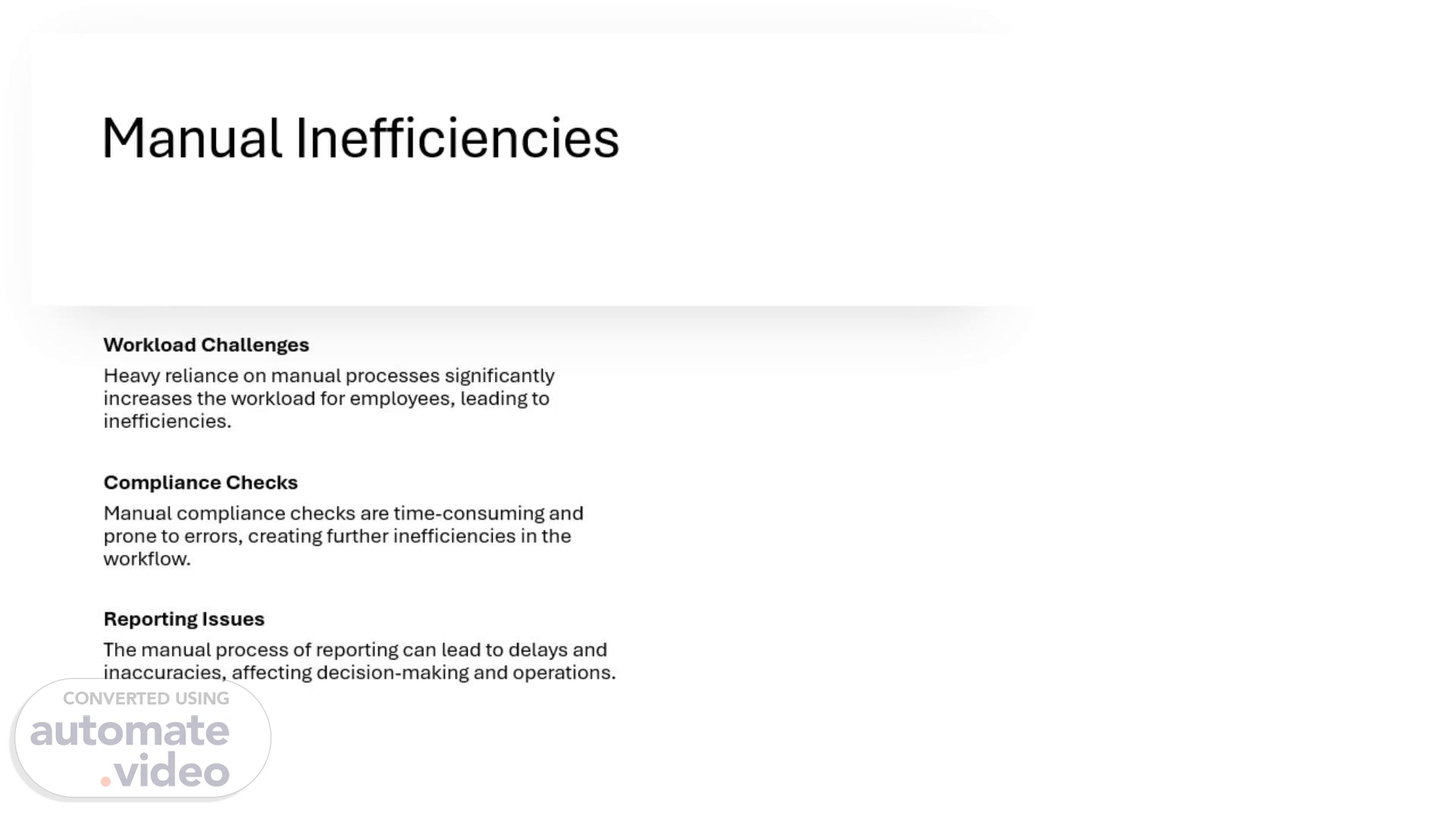Scene 1 (0s)
[Audio] n today's evolving landscape of risk and compliance, organizations face numerous challenges—one of the most critical being manual inefficiencies. Systems that rely heavily on human involvement are inherently prone to errors, delays, and inconsistencies. The limited capacity of individuals to process large volumes of compliance-related tasks can lead to bottlenecks, missed deadlines, and reduced operational agility. This dependency not only hampers accuracy but also limits scalability, making it increasingly difficult for institutions to keep pace with dynamic regulatory requirements..
Scene 2 (41s)
[Audio] High cost of non compliance – Cost optimization remains a key priority for organizations aiming to improve their profit margins. However, non-compliance with regulatory standards can significantly undermine these efforts. The financial impact of non-compliance—including hefty fines, legal expenses, and operational disruptions—can be substantial. Beyond the monetary cost, it also poses serious risks to an organization's reputation and erodes stakeholder trust, making long-term recovery both difficult and expensive..
Scene 3 (1m 19s)
[Audio] In today's complex world of risk and compliance having a reactive posture provides the ability to identify and prevent risks at its inception itself..
